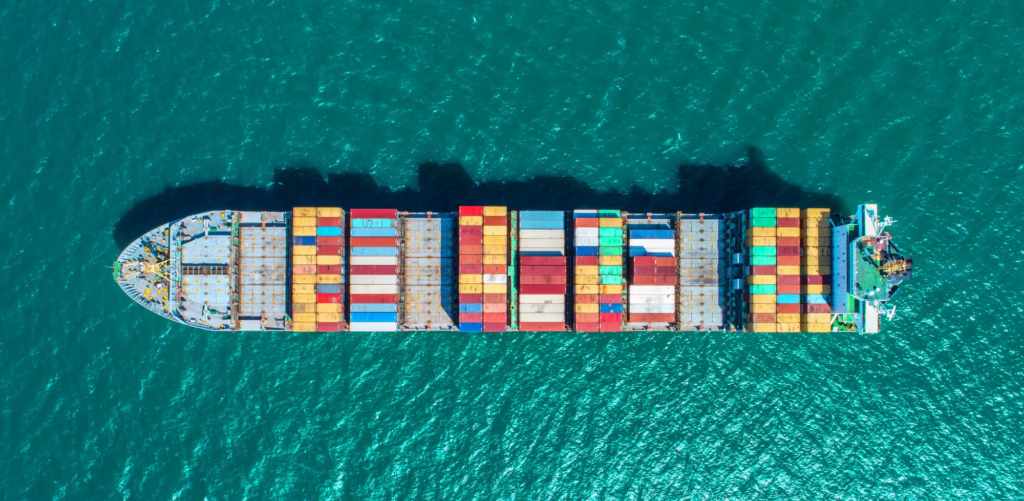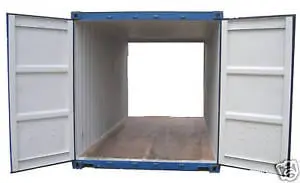Your Ultimate Guide to Different Types of Shipping Containers
No two shipping containers are built the same. Well, that may be bit of an exaggeration, but there are many different types of shipping containers available for purchase. Click here to learn about them all.
The shipping industry relies on all the different types of shipping containers.
They are integral to the entire shipping process. They keep the products safe and secure as they are transported over land and see to other parts of the world. The containers make sure the products get to their final destination in one piece.
But not every kind of product uses the same type of shipping container.
Take a look at these 15 shipping containers to learn more about how they’re used and what they carry.
 1. Dry Storage Container
1. Dry Storage Container
These are the most common kind of shipping containers. You can find them in sizes from 10 to 20 feet to as big as 40 feet.
Dry storage containers have sturdy walls, roof, and floors, which makes them resistant to bad weather. Because they carry dry materials, most people use these containers to transport general cargo.
2. Flat Rack Container
 Flat rack containers are similar to dry storage containers, the only difference being their collapsible sides. In other words, you can fold the sides of a flat rack container down and turn the container into a flat surface.
Flat rack containers are similar to dry storage containers, the only difference being their collapsible sides. In other words, you can fold the sides of a flat rack container down and turn the container into a flat surface.
This makes an ideal surface for transporting a variety of heavy loads. For example, you can use flat rack containers to ship construction equipment, heavy machinery, vehicles on tracks, building supplies, or oversized cargo.
Some kinds of 40 feet flat racks can carry 45 metric tons in one load.
3. Open Top Container
The roof of this shipping container is convertible and removable. If you have to ship over-height cargo, you can take off the roof and let the cargo extend out the open top.
You can also use a crane to load materials through the roof that are too large to fit through the container door. This might include tall machinery or other heavy items you can only lift with a crane.
Open top containers come with lashing rings along the sides of the rails and corner posts to help you secure your products. You can find these containers in 20 feet or 40 feet sizes.
 4. Tunnel Container
4. Tunnel Container
This type of containers has a set of 8 feet double doors on each end. When both these double doors are opened, the container looks like a giant tunnel.
Tunnel containers make it easy and fast to load and unload cargo.
5. Open Side Storage Container
Instead of opening at the ends like most other shipping containers, these containers open on the sides. They have doors that can change into open sides if you need an extra wide opening to load your cargo.
6. Refrigerated ISO Containers
These shipping containers regulate the temperature inside the container so they can transport perishable products over long distances. This could include anything from vegetables to seafood.
Refrigerated ISO containers are also known as reefer containers, and they keep the temperature low enough to prevent spoiling. If your products do spoil in one of these containers, you will only get coverage for the loss if the reefer wasn’t working the way it was supposed to.
 7. Insulated or Thermal Containers
7. Insulated or Thermal Containers
Insulated or thermal shipping containers are like the opposite to refrigerated ISO containers. Instead of keeping the inside temperature cool, they heat up the containers to high temperatures.
Why?
When you expose shipping containers to high temperatures over long periods of time, they can become damaged. Heating up the containers allows them to stay at a consistent temperature for the entire journey.
This helps them withstand higher outside temperatures. You should use these shipping containers for long distance transportation.
8. Tanks
A large part of the shipping industry relies on tanks. These containers are made of steel or anti-corrosive materials, which give them a long life and protect the cargo they’re carrying.
If you need to transport any liquid materials, you need to use a tank.
9. Cargo Storage Roll Container
A cargo storage roll transports stacks or sets of products. These types of containers are made of wire mesh along rollers, so you can move them without much trouble. Because of their material, you can also fold these containers.
You can find the strong mesh in a multitude of colors. This can help you color code specific orders or give your workstation a bit of personality.
 10. Half Height Containers
10. Half Height Containers
Half height containers provide a way for you to load and unload things like stone, coal, and other similar goods in a quick and efficient manner. As the name suggests, these containers are half the height of other shipping containers. But this helps keep the load at a reasonable weight.
11. Car Carriers
A car carrier shipping container transports cars over distances that are too long or impossible for someone to drive. The containers are a little bigger than the car itself, ensuring the car doesn’t move around or get damaged during the shipping process.
The sides of these containers collapse, making it easier to load the car into the carrier.
12. Intermediate Bulk Shift Containers
These containers deliver materials from one shipping destination to another. In other words, they carry goods through an intermediate location to the next place where they will be repackaged and shipped again. From there, you can ship the products to their final destination.
Intermediate bulk shift containers can handle large amounts of goods at one time.
13. Drums
A drum also carries liquid goods. You can get them in materials like fiber, steel, hard plastic, and other lightweight metals. If you need to transport a lot of liquid at one time, these are the containers you’ll need.
They have a non-modular shape. So even though they are smaller than many other shipping containers, they’ll need more space during the shipping process.
 14. Special Purpose Containers
14. Special Purpose Containers
These shipping containers are custom made for whatever products they’ll be carrying. Because of this, their construction and materials depend on what they’re used for.
Security is one of the main factors of these containers.
Special purpose containers are most often used for things like weapons, arson, etc.
15. Swap Bodies
Because these containers are usually found in Europe, they aren’t made with the ISO standards. This means they aren’t the same size or shape as most other shipping containers.
Swap bodies have solid, firm bottoms, and the tops are convertible. This makes them a good choice for many different kinds of products.
What You Should Know About Different Types of Shipping Containers
The types of shipping containers you need for your business depend on what kind of products you’ll be handling. Anything liquid should go in drums or tanks while oversized items need open top containers. In other words, match your shipping container with the goods you have to transport.
Already know what kind of shipping container you need? Take a look at some of the choices available.

 1. Dry Storage Container
1. Dry Storage Container
 4. Tunnel Container
4. Tunnel Container 7. Insulated or Thermal Containers
7. Insulated or Thermal Containers 10. Half Height Containers
10. Half Height Containers 14. Special Purpose Containers
14. Special Purpose Containers
I find it amazing to learn that there are different types of shipping containers that are able to do various functions. My uncle is thinking of investing in one for his products since he owns a farm and some of his products are perishable. I had no idea that refrigerated shipping containers exist! Since they can keep the temperature-controlled inside, this is exactly what he was looking for.